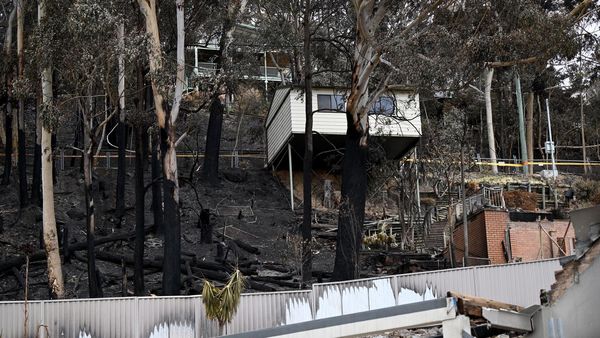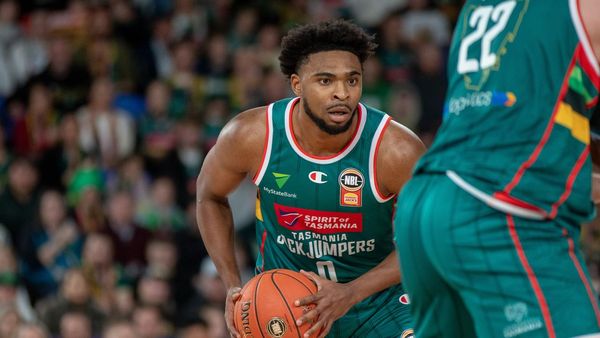Scott Morrison on Monday will unveil a plan for a new submarine base to be built on the east coast to support Australia’s nuclear-powered submarines.
Announcing the base in a speech to the Lowy Institute, the Prime Minister will declare that “Australia faces its most difficult and dangerous security environment in 80 years”.
The government has been elevating national security as an issue for the election, but Labor is taking bipartisan positions and can be expected to do so on the submarine base.
Three sites are being considered for the base – Brisbane, Newcastle and Port Kembla. The short list follows Defence examining 19 possible locations.
Morrison says that on early estimates more than $10 billion is needed to provide the facilities and infrastructure required for the transition from the present Collins-class submarines to the nuclear-powered ones.
The money will come from a new allocation within the existing defence budget.
In his speech, a draft of which was released ahead of delivery, Morrison stresses the new base will be extra capacity, not a relocation of existing or planned capacity for Fleet Base West, where the Collins submarines are based.
Given its strategic importance in the Indian Ocean, that will remain home for present and future submarines, Morrison says.
“The decision to establish an east coast submarine base has been many years in the making as part of our transition from Collins,” he says.
“The government has now determined that, to support our decision to acquire nuclear-powered submarines, establishing a second submarine base on our east coast will enhance our strategic deterrent capability, with significant advantages in operational, training, personnel and industrial terms.
"An optimal east coast base would provide home-ported submarines with specialised wharfs, maintenance facilities, administrative and logistics support, personnel amenities, and suitable accommodation for submarine crews and support staff.
"It would also enable the regular visiting of US and UK nuclear-powered submarines.”
Defence Minister Peter Dutton on Sunday reiterated that Australia will get the nuclear-powered submarines “much sooner” than the originally-canvassed timeframe of around 2040.
Dutton told the ABC the government would have an announcement “within the next couple of months” on “what boat we are going with [and] what we can do in the interim”.
An evaluation process has been underway to determine whether Australia will acquire a British or an American design. Australia will have a gap in submarine capability before the arrival of the nuclear-powered submarines, which has led to speculation about the possibility of leasing.
Read more: How do nuclear-powered submarines work? A nuclear scientist explains
Dutton said: “Both the US and the UK understand the timelines, they understand what is happening in the Indo-Pacific and they are very, very willing partners”.
Morrison says in his speech all three sites being considered for the new base meet many of the required criteria. These include
proximity to industrial infrastructure
closeness to large population centres to help recruit the substantially larger uniformed submarine workforce needed
reasonable proximity to maritime training and operational areas, as well as to deep water, and to weapons storage and loading facilities
strategic depth as far as possible from potential threats, and the ability to support the mounting and sustaining of operations.
Morrison says Defence will immediately engage with the NSW and Queensland governments and local authorities to validate the work to date and begin negotiations “on what will be an enormous undertaking”. This initial work would be due to be finished by the end of next year.
The new base would bring significant economic benefits, Morrison says.
On February 8 the Exchange of Naval Nuclear Propulsion Information Agreement with AUKUS partners the United States and the United Kingdom came into force.
“This landmark agreement is the first time since 1958 that the US has allowed access to this information. It gives Australia the training and the information sharing that we need to build a nuclear-powered submarine capability here,” Morrison says.
“It is a huge milestone and a reflection of the strategic trust that we’ve built with our partners.”
On Ukraine, Morrison says “everything points to a bloody and protracted conflict” there.
He and Ukraine president Volodymyr Zelenskyy spoke at the weekend, including discussing possible ways in which Australia and the international community could further assist. As well as humanitraian assistance, Australia has already provided $70 million in lethal aid.
Morrison says “a new arc of autocracy is instinctively aligning to challenge and reset the world order in their own image.
Read more: Australia to build nuclear submarines in a new partnership with the US and UK
"We face the spectre of a transactional world, devoid of principle, accountability and transparency, where state sovereignty, territorial integrity and liberty are surrendered for respite from coercion and intimidation, or economic entrapment dressed up as economic reward.”
The crisis has been a “major wake up call” for Europe, in both strategic and economic terms, he says.
“The strategic, political, economic and social implications of this crisis will be deeply felt in Europe, but will inevitably stretch to the Indo-Pacific,” he says.
“This war of choice by Mr Putin is a reminder that, although Australia’s focus is the Indo-Pacific, events anywhere can affect our security.
"The Indo-Pacific remains at the centre of global geo-strategic competition,” he says.
“Threats in our region are proliferating from both state and non-state actors.
"Militarisation is expanding and evolving rapidly.
"The spectre from terrorism and all forms of violent extremism endures.
"The challenge from more surreptitious malign activities – espionage, disinformation, cyber-attacks, foreign interference, and economic coercion – is mounting daily.
"We’re seeing increasing resort in our region to ‘grey area’ tactics – where the boundary between legitimate and hostile activity is deliberately blurred.
"And the rise of so-called ‘hybrid warfare’, that has stripped away the old boundaries that once separated the realms of defence, foreign policy, trade and investment, communications and other areas reaching deep into our domestic society.”
“The challenges we face continue to mount. They require us to increase our resilience, expand our capabilities and harden our defences.”
Labor’s defence spokesman Brendan O'Connor told Sky on Sunday: “I think it’s fair to say we’ll see a further increase in investment in defence and Labor supports that approach.”
UPDATE: Announcement on nuclear submarine design not until after election, PM says
The announcement about which design of nuclear-powered submarine Australia will acquire won’t be made until after the May election, Scott Morrison said on Monday.
Morrison, answering a question at Lowy, corrected a timeframe given on Sunday by Defence Minister Peter Dutton, who said the decision would be revealed “within the next couple of months”.
That timetable would have put it into the pre-election “caretaker” period, during which governments don’t make major policy decisions that are likely to commit an incoming government.
But Morrison said: “we don’t anticipate that that decision will be made before the election. We don’t, and no one should expect it to.”
Meanwhile Anthony Albanese declined to be drawn on Labor’s stance on Morrison’s commitment to building a new submarine base on the east coast to support the nuclear-powered subs. He said Labor would wait for a briefing on the proposal.
Michelle Grattan does not work for, consult, own shares in or receive funding from any company or organisation that would benefit from this article, and has disclosed no relevant affiliations beyond their academic appointment.
This article was originally published on The Conversation. Read the original article.







